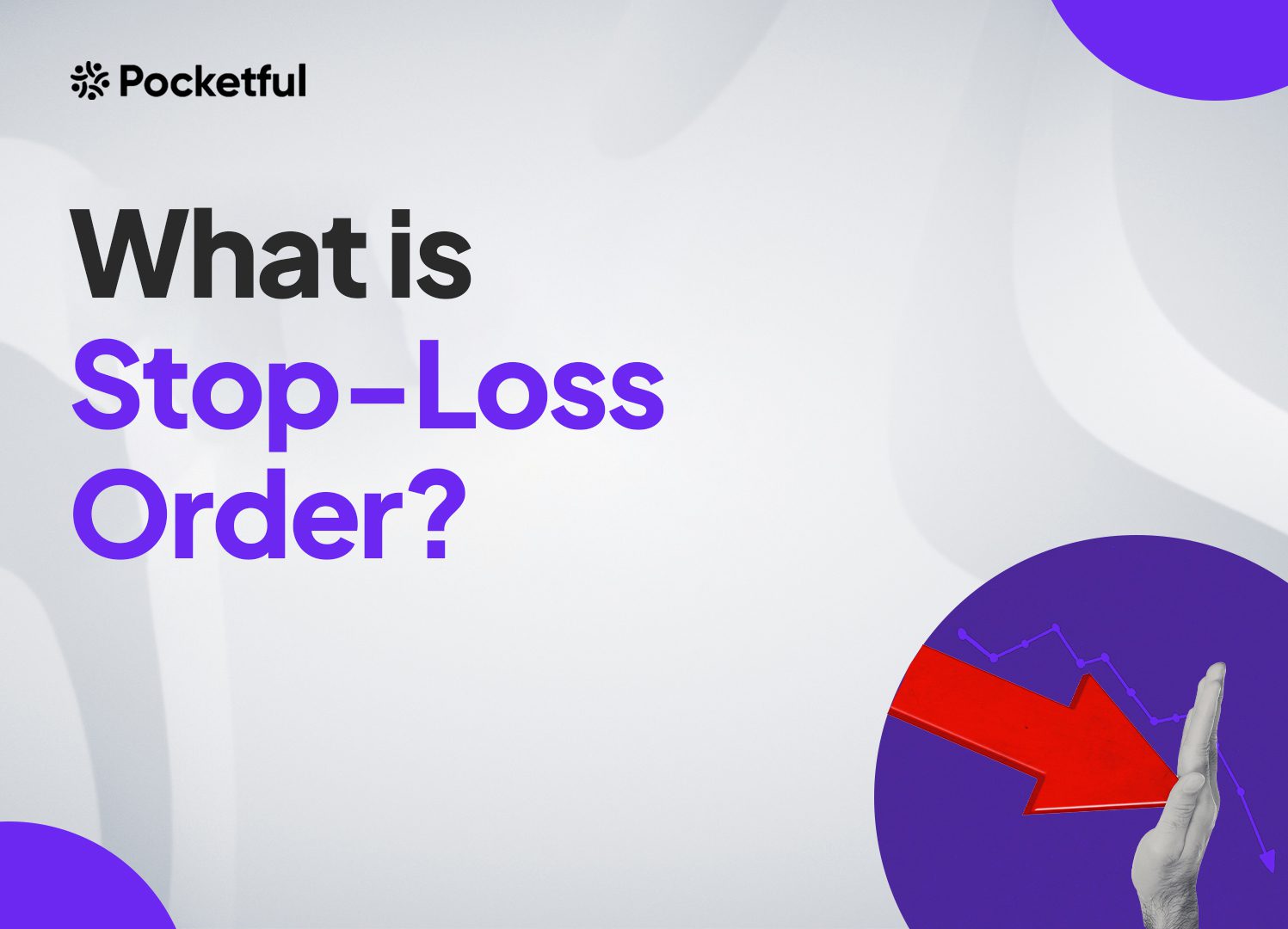| Type | Description | Contributor | Date |
|---|---|---|---|
| Post created | Pocketful Team | Jul-04-24 |
What is a Stop Loss and How to Use While Trading?

Before making any trades in the stock market, traders need to establish their own rules and guidelines. If they are novices, they must learn the art of using a stop-loss. The phrase “stop-loss” is frequently used in the trading community and is employed by nearly all profitable traders.
Read our blog for an overview of stop loss, its types, advantages, and disadvantages.
What is a Stop Loss?
Stock market traders use a stop-loss to guard against losing money on any kind of investment. It’s a directive given to the trading platform, telling it to square off any position (long or short) as soon as the price hits a specific level. It is not mandatory to use stop-loss in every trade, but it is always suggested that it is used as it minimizes the risk of substantial loss of capital.
Features of Stop Loss Order
A stop-loss order has the following features:
- The trading system automatically executes the stop-loss orders.
- Using a stop-loss order helps traders to control their emotions while making decisions.
- Stop-loss is an important tool in a volatile market where prices change rapidly.
- You can easily change the stop-loss as per the movement of stock price.
- Typically, placing a stop-loss does not incur any additional cost.
Types of Stop Loss Orders

There are several types of stop-loss, a few of which are mentioned below-
- Fixed Stop-Loss Order: These stop-loss orders have the price set at a fixed level. If the stock price hits that fixed level, only a limit order is entered into the system, and the order will only be filled if the price hits the investor-specified level. It is usually preferred by investors who prefer a constant stop-loss level.
- Trailing Stop-Loss Order: This dynamic order modifies the trigger price if the market moves favourably and is used to lock in profits or limit potential losses. The order is expressed as a percentage of the asset price. If the price rises, the trailing stop-loss automatically moves up. Similarly, in the case of a short position, as the asset price goes down, the trailing stop-loss automatically moves down.
- Stop Loss-Market Order: In this order, a trader sets a trigger price, generally below the current price in case of a long position or above the current price in case of a short position. If the price touches the trigger price, a market order is immediately sent into the exchange to square off the open positions. However, in the case of a volatile market, the executed price might differ from the trigger price.
Factors to Consider Before Using Stop Loss Order

There are several factors that an investor should consider before placing a stop loss:
- The most important factor one should consider is placing stop-loss based on their risk tolerance capacity.
- The stop-loss also depends on the trading strategy or chart patterns they use.
- Types of trade also define the stop loss as if you are a long-term investor; then you will have a wider stop loss. If you are trading on an intraday basis, then you must have a tight stop loss.
- It also depends on the volatility of the stock price; for example, if the stock is more volatile, then one should have a wider stop loss.
Example: Suppose a trader wishes to buy a moderately volatile stock on an intraday basis and doesn’t want to take substantial risk. Stop loss in such a scenario can be set as 3% below the buying price. Here, it can be seen that the trader doesn’t want to lose more than 3% of the capital on this trade.
Advantages of Stop Loss Order
A stop-loss order has the following advantages:
- It helps you protect your capital against big losses.
- When a stop loss order has been placed, a trader will be confident that their position will be exited if the price moves in the opposite direction.
- Generally, a trader gets attached to their trades, forcing them to hold their position in expectation of a rebound in prices. Putting a stop-loss will remove the emotions.
Disadvantages of Stop Loss Order
A stop-loss order has the following disadvantages:
- Market volatility can trigger a stop-loss order and then move in the favourable direction, resulting in losses even when the trader’s view is correct.
- A gap up or gap down in case of a stop-loss limit order can cause the order to go unfulfilled, resulting in a loss greater than specified in the stop-loss order.
Read Also: How to Start Stock Market Trading With Low or Limited Capital
Conclusion
Stop loss is a practice a trader uses to avoid substantial losses when the direction of trade goes against the predicted movement. But one should remember that placing stop loss is a risk management tool that can help you limit your losses. Along with this, it also limits your profit. Along with placing a stop loss, one should consult their investment advisor before entering any trade.
Frequently Asked Questions (FAQs)
How does a stop-loss order work?
A stop-loss order works in a manner where the stock price reaches a certain level, and the trader’s position will be automatically squared off.
Can we place a stop-loss order in volatile market conditions?
Yes, placing a stop-loss order in a volatile market condition is essential as it protects your capital in case of sudden price fluctuations.
What are the types of stop-loss orders?
The types of stop-loss orders are fixed stop-loss orders, trailing stop-loss orders and stop-loss market orders.
Do brokerage houses charge any fees for placing stop-loss orders?
No, brokerage houses do not charge any kind of fee for placing a stop-loss order, whereas if the stop-loss order is executed, they will charge a certain amount as brokerage.
Can I trade without a stop loss?
Yes, you can trade without placing a stop-loss order, but it is suggested that you use stop-loss to protect your capital.
Disclaimer
The securities, funds, and strategies discussed in this blog are provided for informational purposes only. They do not represent endorsements or recommendations. Investors should conduct their own research and seek professional advice before making any investment decisions.